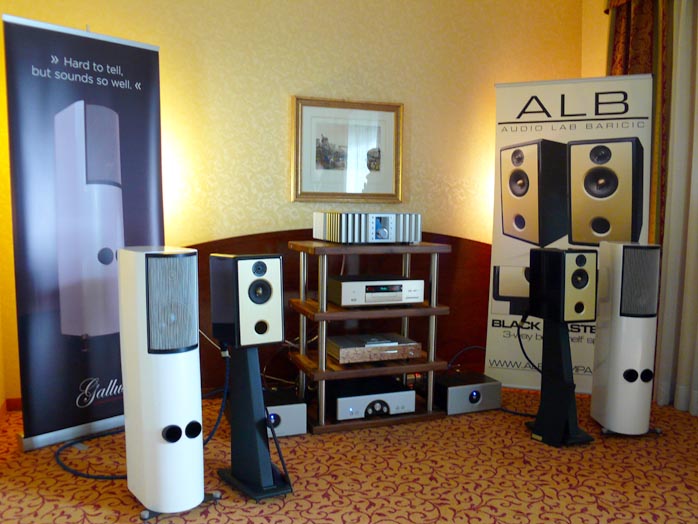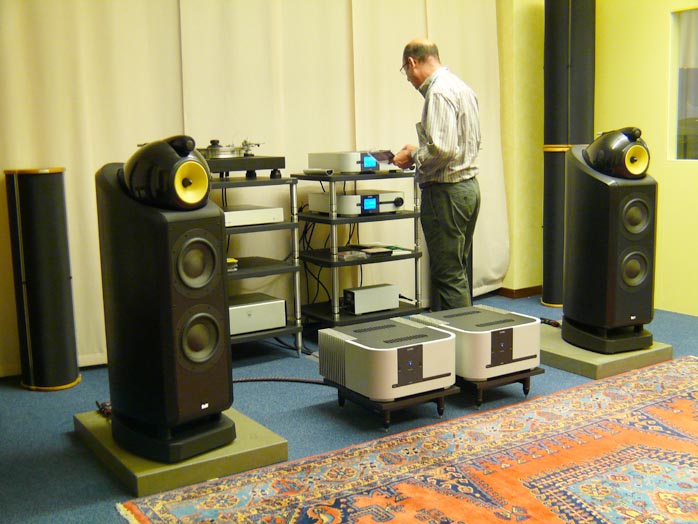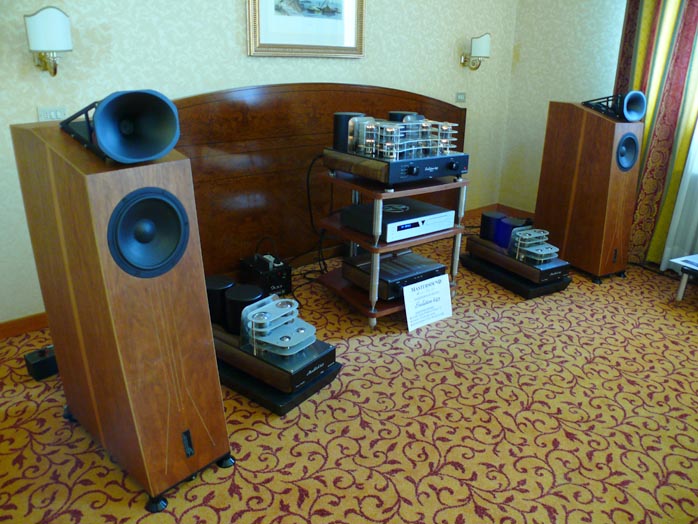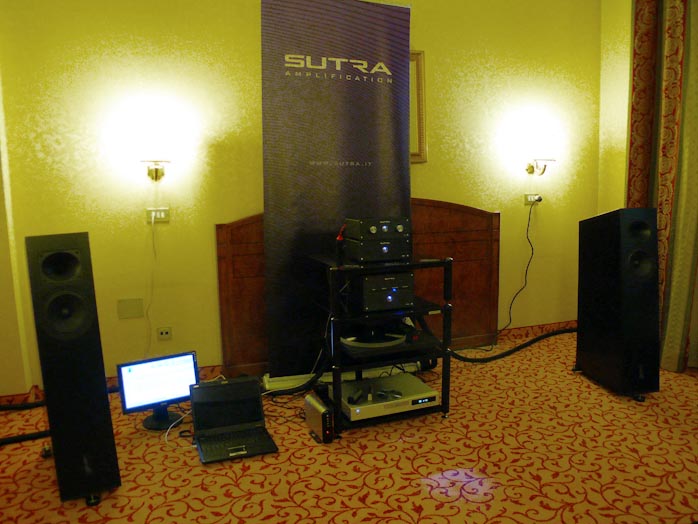This review page is supported in part by the sponsors whose ad banners are displayed below |
 |
Accustic Arts from Germany showed their 3rd-generation Proline monitors, a 7-inch two-way with Magnesium diaphragm mid/woofer in die-cast zinc basket and 1.1" silk-dome tweeter without ferro fluid but silver voice coil. Each pair is matched to within +/- 0.25dB, frequency response is 45 - 28,000Hz and dimensions are 16.5 x 9.8 x 14.2 inches, with a weight of ca. 37.5lbs.
|
 |
One of the most ubiquitous room-tuning devices at the show was this variable resonator by Acoustica Applicata of Gallicano called Polifemo. Based on the Helmholtz resonator principle to make it a narrow bandwidth device, the Polifemo is tunable from 26Hz upward. Cylindrical in shape and elevated from the floor, the base sports two holes of dissimilar diameter which may be opened or closed in various combinations. At half mast, there is an aperture with an iris diaphragm like a camera lens to alter its diameter from 4 - 12cm. Corresponding peak attenuation frequencies range from 26 to 47Hz but those can be shifted by altering the port loading at the bass. Inside the cylinder is a sound-absorbing membrane whose angle of inclination is variable to impact air-flow velocity.
|

 |
ALB is short for Audio Lab Baricic, a Croatian speaker company named after chief designer Branko Baricic who claims 30 years of experience in the field. Their output today spans from pro audio speakers for 400KW systems and 100,000-visitor venues to home audio. ALB authored a 4-way active speaker as far back as 1985. The core model for the home market is the Black Master 3-way monitor now in MkII iteration. This is a bandpass design with a 2.56cm tweeter, 9cm midrange and 17cm woofer for a claimed response of 40Hz to 35kHz at 88dB. A matching passive 2 x 170mm subwoofer is available and called, not surprisingly, Black Master Sub.
Meanwhile the bass-reflex 3-way Aldebaran speaker from Slovenia's Gallus Audio Technology uses a Finnish Beech/Slovenian Pine cabinet, claims a frequency response of 36Hz to 25,000Hz, sports an 87dB sensitivity and runs crossover points at 100Hz and 1800Hz. The room below had the Gallus speakers on the outside, the ALB speakers on the inside.
|
 |
Abbingdon Music Research isn't new but their CD-777 is, a step-down model from the illustrious CD-77 and still with valve outputs, a top-loading transport and USB input but rather more affordable.
|
 |
Angstrom Research of San Benedetto del Tronto showed with German Physiks and wins a prize for the most tubes in a single chassis.
|


|
|
|
Armonia Loudspeakers combine their proprietary Neodymium/Kapton planar tweeter with dynamic midranges and woofers.
|
 |
As one of the world's largest consumer loudspeaker companies, Bowers & Wilkins is the antithesis of new. Lest this selective report create an impression of niche companies and products however, I thought it fitting to include proof to the contrary - which most assuredly wasn't limited to B&W.
|

|
Best overheard quote on Saturday, of an engineer describing his industrial design boss' exasperation over difficulties with implementing the desired, viciously massive 1kg freely rotating aluminum wheel for a volume control: "We don't need no stinkin' customers who want to change the volume."
|
|
|
|
Blumenhofer Acoustics loudspeakers were spotted in at least four rooms—with Grandinote, Mastersound, Sutra and Vexo—to suggest that this company has come far very quickly at least in reference to penetrating the ranks of their fellow electronics manufacturers needing quality speakers to show with.




|
  |
 |